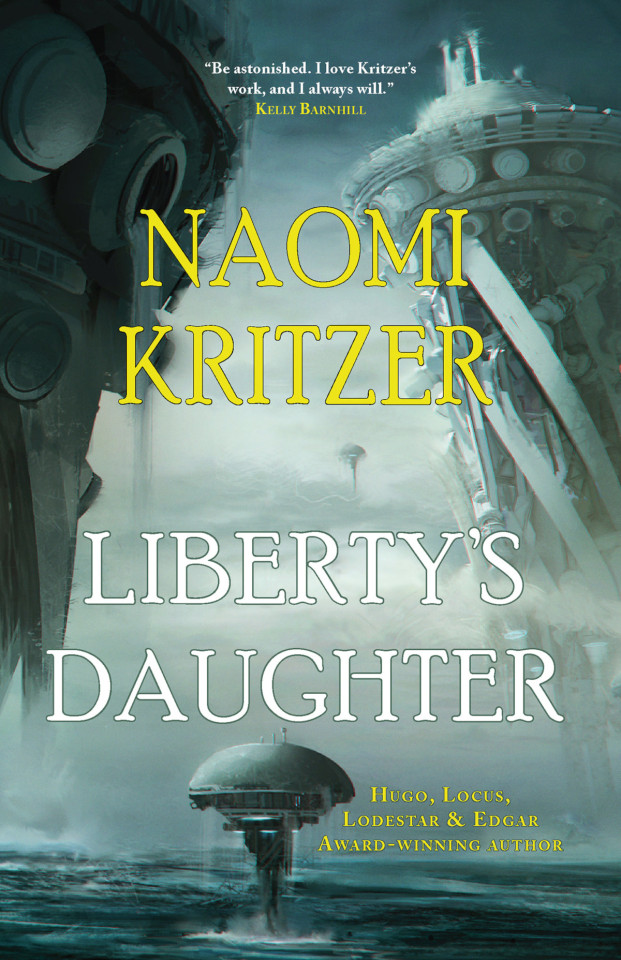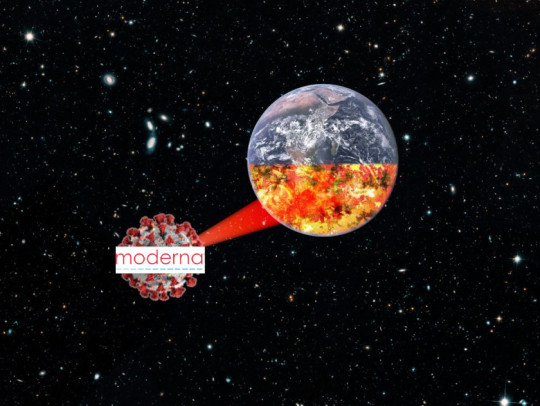#trufan
Explore tagged Tumblr posts
Text
there is a fox antagonising the deer at the deer pantry while theyre trying to eat their dinner
3 notes
·
View notes
Text

Details of a giveaway that BioWare are doing.

Dragon Age on YouTube: "Giveaway Time! Enter for the chance to win a custom Dragon Age-themed console or $200 BioWare Gear Store gift card! Sponsor: Trufan Inc. NO PURCHASE NEC. 18+ Ends June 17, 2024." [here is the link with the info] [source, two]
139 notes
·
View notes
Text
Naomi Kritzer's "Liberty's Daughter"

Tomorrow (November 22), I'll be joined by Vass Bednar at the Toronto Metro Reference Library for a talk about my new novel, The Lost Cause, a preapocalyptic tale of hope in the climate emergency.

There's so much sf about "competent men" running their families with entrepreneurial zeal, clarity of vision and a firm confident hand. But there's precious little fiction about how much being raised by a Heinlein dad would suuuck. But it would, and in Naomi Kritzer's Liberty's Daughter, we get a peek inside the nightmare:
https://fairwoodpress.com/store/p148/LIBERTY%27S_DAUGHTER.html
Beck Garrison is a seasteader, living on a floating platform built by libertarian cranks to get away from big government, taxes, and the idea that people owe each other care and consideration. Various kinds of market trufans have built their own fiefdoms: there's a sin city, a biotech free-for-all, a lawless Mad Max zone, and so on.
Beck's father, Paul, is some kind of local functionary. He's wealthy and respected, both a power-broker and a power in his own right. He pays for Beck to get private tutoring (no public schools – no public anything) and if she needs bailing out from some kind of sticky situation, he's got her on his account with Alpha Dogs, the toughest mercenaries on the sea (no police, either). An armed society is a polite society, after all.
Beck has a job, naturally (there ain't no such thing as a free lunch). She's a finder: for all that the steaders worship commerce as a sacrament consecrated to the holy Invisible Hand, there's not a lot of retail at sea. California – the nearest onshore neighbor – has lots of pesky taxes, and besides, it's a long ways off. Besides, space is at a premium on the stead, so people don't have attics and basements to fill with excess consumer junk.
Instead, when a steader needs something – a shoelace, a fashion accessory, or any other creature comfort – they hire a finder like Beck to clamber around between the decks of the aircraft carriers, scows, yachts and other vessels comprising the stead. It's a good way for Beck to earn spending money, and she's a natural at it. After all, she's been a steader since she was four, when her mother died in a drunk driving accident and her father took her to sea.
The story opens with a finding job. Beck wants a pair of sparkly shoes for her client, and the woman who owns them is an indentured servant whose sister has gone missing. Find the sister, get the shoes.
Indentured servant? Yeah, of course. Freedom of contract is the one freedom from which all the others flow, so you can sell yourself into bond labor. Hell, maybe you can earn enough to buy a share in the stead and become a co-owner/citizen.
This is the setup for Beck's adventure, which sees her liberating bond slaves tricked into fatal work details, getting involved in reality TV production, meeting illegal IWW organizers, and becoming embroiled in a pandemic that threatens the lives of all the steaders. It's a coming of age novel, told with the same straightforward, spunky zeal of Heinlein's juvies, but from the perspective of the daughter, not the dad.
Kritzer makes it clear that growing up under the thumb of a TANSTAAFL-worshipping, self-regarding, wealthy autocrat who worships selfishness as the necessary precondition for market clearing would be a goddamned nightmare. She also thinks through some of the important implications of life in one of these offshore libertarian archipelagos, like the fact that the wealthy residents would be overwhelming drawn from the ranks of corporate criminals and tax-cheats, and the underclass would be bail-skipping proles ensnared in the War on Drugs.
But Liberty's Daughter isn't a hymn to big government. Most of the steaders are escaping the US government, a state whose authoritarian and cruel proclivities are well-documented. Kritzer uses the labor dispute at the core of the novel to reveal market authoritarianism – the coercive power that hunger and poverty transfers from the have-nots to the haves. Think of Anatole France's wry observation that "the law, in its majestic equality, equally forbids the rich as well as the poor to sleep under bridges, to beg in the streets, and to steal bread."
If you're familiar with Kritzer's work, you won't be surprised to learn that she tells a zippy, fast moving tale that smuggles in sharp observations about the cleavage lines between solidarity and selfishness. Her story "So Much Cooking" – published years before the pandemic – captured life under lockdown with eerie prescience:
https://pluralistic.net/2020/04/17/pack-of-knaves/#so-much-cooking
More recently, her "Better Living Through Algorithms" is a dazzling display of knifework that'll cut you a dozen times before you even notice that you're bleeding:
https://pluralistic.net/2023/05/02/wunderkammer/#jubillee
If you habitually read Kritzer's short fiction, Liberty's Daughter might be familiar to you, as it is adapted from a series of stories that originally ran in The Magazine of Fantasy and Science Fiction. Kritzer's YA debut, Catfishing on the CatNet, was also adapted from a short story, "Cat Pictures Please," which won the Hugo Award in 2016:
https://boingboing.net/2019/11/19/setec-astronomy-kitteh.html
"Libertarian exit" – buying a country, or an archipelago, or just a luxury bunker – has been in the air lately. It's a major element of my new novel, The Lost Cause, which came out this month – anarchocapitalist wreckers try to sabotage the Green New Deal from the seastead they've moored to the tallest point in the drowned Grand Caymans and declared to be a sovereign nation:
https://us.macmillan.com/books/9781250865939/the-lost-cause
Kritzer is great at catching that zeitgeist. Seasteading is part of a long, bitter dream of a certain kind of selfish person to escape society, a tale told in lurid and fascinating detail in Raymond Craib's 2022 history Adventure Capitalism:
https://pluralistic.net/2022/06/14/this-way-to-the-egress/#terra-nullius
There's a longstanding joke to the effect that you can shut down any discussion of the merits of a libertarian exit by asking three questions about the brave new world:
Whether you can sell your organs;
Whether you can sell yourself into slavery; and
Whether there is any age of consent.
Kritzer tackles the first two, but tacks around the third. Instead, by giving us a young adult protagonist who has been raised in a rusting libertopia, she finds a decidedly less incendiary way to think about the role of autonomy in adolescents, and thus generates far more light than heat.
The result is a cracking read with a sting in its tail.

If you'd like an essay-formatted version of this post to read or share, here's a link to it on pluralistic.net, my surveillance-free, ad-free, tracker-free blog:
https://pluralistic.net/2023/11/21/podkaynes-dad-was-a-dick/#age-of-consent
130 notes
·
View notes
Note
I've just realized I have no clue what continent you're actually on, but... do you go to any conventions these days?
(Marcon 2023 is fixin' to be an ASTONISHING ribbons-saying-you-survived-it-will-be-handed-out-at-other-cons level of disaster, or so I've been hearing....)
I'm close to the geometric center of the USA in Omaha, Nebraska.
I haven't been a regular congoer since about 2000 (when we lived in Louisville) and I haven't traveled to cons (instead of attending only local ones) since about 1990. I entertain the notion sometimes but I'd probably start out with one of the two big Doctor Who annuals, Chicago TARDIS, because I have family there to visit incidentally. I don't remember from my "trufan" days in the 80s that I ever went to a Marcon but it was always on my group's radar.
3 notes
·
View notes
Text
Even worse, the one song* (or album†) you love is the one they hate and have sworn to never make anything like it ever again (or that their usual fans‡ hate). * Fight For Your Right, Licensed to Ill, Beastie Boys - They hate Fight For Your Right because it was a parody song poking fun at "all the mindless party songs of the time" and it kinda pisses them off that it's one of their most popular songs songs. They refused to play it in concert for a very long time (I'm not sure if this has changed since the early 00s). † 8 Mile: Music from and Inspired by the Motion Picture, Eminem - He hates that is was his highest selling album because it's nothing like his own music, it's all "from the perspective and live experienced of the character". Sorry - not sorry - Em, but more people prefer it to your misogynistic hate drivel. ‡ Creep, debut single 1992/09/21 rereleased on Pablo Honey , Radiohead - Every "trufan" I've spoken to hates Creep because (and I quote) "It's not anything like their other better music, and Pablo Honey is their worst album". I can't comment, all I know is Creep is the only song I like off of Pablo Honey, so I've never heard anything else by Radiohead. The lead singer and several band members grew to hate playing it in concert (and thus mostly stopped for a long time) because they felt that it was "just us doing a cover of our first and greatest success". They probably stopped for good at this point because the lead singer "no longer has the vocal range to perform it properly" (said by Thom Yorke, which yeah dude's like 55 now of course he can't hit the high notes like he could when he was 24). I'm sure there are more, many, many, more, but these three standout to me as they impact my musical collection.
heartbreaking: none of artist's other songs are as much of a banger as the song I discovered the artist by
77K notes
·
View notes
Text
ONE OF MY DAILY LISTENS SHE POUR OUT EMOTIONS IN THIS SONG. IT'S CRAZY EVERYTIME I HEAR IT I THINK TO MYSELF WHO MADE THIS YOUNG LADY FEEL SO DEEP MY GOD THIS HEAR HAD TO COME FROM THE UNIVERSE INTO HER SOUL...
#TRUFAN
0 notes
Text
it’s just kind of antithetical to me, this exclusionary thing wrt games bc if i like a game and u so much as blink in the direction of it i will go into full on pitch mode, i will sell you that fucker i want nothing more than for ppl to experience things that i think are great, and if someone does pick smth up on my rec and hit a wall during a hard part i’m almost reprimanding the game like “you fool, we almost had them!” i don’t relish the idea of people finding a thing i like frustrating to a degree that it’s no longer entertaining? and that seems?? like the natural impulse of anyone who loves a game??? but i guess???? not?????
#overcoming a challenge is fun facing an insurmountable challenge is draining#the trufans of games are the ppl writing strategy guides and making tip videos those ppl get it
4 notes
·
View notes
Text
Trump gave Moderna all the patent-waivers it needed to make a vaccine

There’s a lot of competition for the title of “Most On-The-Nose Symbol of Late Stage Capitalism,” but I think there’s a strong case for awarding the crown to “Vaccine Apartheid” — the decision to deny covid vaccines to billions of poor people in the Global South.
Here’s how that went down: countries in the poor world were arm-twisted into signing the WTO agreement on pain of being shut out of global trade (these former colonies had all been forcibly converted to export crop economies that relied on rich-world countries for seed and Big Ag tech, so opting out of trade wasn’t an option).
Part of the WTO is the TRIPS (AKA “Agreement on Trade-Related Aspects of Intellectual Property Rights”) — a treaty that binds WTO members to respect each others’ patent rights. This is an inarguably bad deal for poor countries, which is why the USA didn’t respect foreign patents until they became a net patent exporter.
One way this can go horribly wrong? Pharmaceuticals. The marginal costs of producing most drugs are very low, but Big Pharma wants to charge all the traffic can bear — markups of tens of thousands of percent! They say this is to recoup R&D, but R&D costs are largely borne by public institutions, with pharma giants privatizing the gains from those public expenditures.
Once a drug is invented and tested, it can be made very cheaply, so poor countries could benefit from it, even given their very modest means, and poor countries can’t afford to pay rich world prices. Cheap drug prices for the global south won’t cut into full-price sales for the poorest 3 billion people. They’re not ever gonna pay US prices.
But this still would be bad for pharma’s business model, which is predicated on raking in those five-figure margins from people in the rich world, some of whom are quite poor (thanks, inequality!). If there’s a low-cost source of pharma’s products somewhere else in the world, then desperate people in the rich world will figure out how to import those low-cost drugs, and a giant pharma company’s stock buybacks and dividends will be reduced from hella-billions to mere umpty-billions.
So if you’re a poor country, signing onto the WTO and the TRIPS means that nearly everyone in your country just won’t have access to lifesaving drugs. This is such an obvious bad deal that the WTO negotiators from the global south balked at it, so the WTO threw them a bone: IP Waivers.
https://pluralistic.net/2021/05/25/the-other-shoe-drops/#quid-pro-quo
Here’s how those (are supposed to) work: if there’s a terrible emergency, say, a pandemic, then the WTO can grant “IP Waivers” to poor countries, which say, “Since this is such an humanitarian disaster, we’re going to temporarily lift your obligation to respect rich, offshore corporations’ patents. You can make their drugs, or import them from another poor country that’s doing so.” Sometimes these waivers make it free to use foreign companies’ patents, other times, they set a fixed cost (a “compulsory license”) for practicing a patent.
IP Waivers are as much as part of the global patent system as patent protections are: they’re the quid-pro-quo that justified poor countries’ tying their own hands and agreeing not to make drugs that would improve the quality of life for the people who live there.
But corporatists and Ayn Rand trufans hate IP Waivers. Back when South Africa and other global south countries were in danger of collapsing under the AIDS pandemic, they petitioned the WTO for an IP Waiver for AIDS drugs, which were otherwise priced beyond their means.
They had a real shot at it, too! But then, the Gates Foundation (yes, that Gates Foundation) sent its operatives to Geneva to argue against any such thing, insisting sovereign countries should beg rich foreigners to donate medicine to them, and if the rich foreigners didn’t want to, they should just let their people die and their nation fail:
https://pluralistic.net/2021/04/13/public-interest-pharma/#gates-foundation
Gates and his Foundation epitomize the idea that the only way to organize public health issues is through the whims of unaccountable billionaires, rather than democratically elected governments. When Oxford University announced plans to make its vaccine patent-free, Gates changed their mind, talking them into an exclusive deal with Astrazeneca instead:
https://khn.org/news/rather-than-give-away-its-covid-vaccine-oxford-makes-a-deal-with-drugmaker/
Rather than trusting billions in the global south to decide how to make and distribute vaccines, Gates set up a program called COVAX, whereby rich people and rich countries could donate covid vaccines — enough to treat just a tiny slice of the world’s poorest people.
https://newrepublic.com/article/162000/bill-gates-impeded-global-access-covid-vaccines
Meanwhile, at the WTO, the global south showed up calling for an IP Waiver for covid vaccines. The rich world’s pharma companies having laid out plans to delay vaccination until 2025 for 2.5 billion people in 125 countries, the case for a covid vax waiver was very strong.
Big Pharma went on the offensive. They paid ghoulish “experts” — like Howard Dean, now an unregistered pharma lobbyist — to spread the racist lie that poor brown people are too stupid to make their own vaccines (the largest vaccine factories are in the global south).
https://pluralistic.net/2021/05/21/wait-your-turn/#vaccine-apartheid
They also promoted the dangerous, medically incoherent theory that poor people should “wait their turn.” This isn’t merely an inhumane, vicious ideology, it’s also a recipe for cooking up lot of covid variants, including those that escape vaccine immunity and re-infect people in the rich world. Leaving 2.5 billion people unvaccinated for years and years, incubating variant after variant, is the gift that keeps on giving…to the virus.
The idea that we can deny vaccines to half the world is like the idea that we can create a swimming pool with a "pissing" and "non-pissing" end, and doom all the people who can't afford the pay toilets to swim in the pissing end - without all of us marinating in piss.
It’s…ironic? Tragic? Tragironic? Because, of course, the vaccines were made with public money — direct state intervention in the market, in the form of R&D and production subsidies and purchase guarantees. The people insisting that unfettered markets are the only way to produce vaccines are manifestly wrong.
https://pluralistic.net/2021/05/16/entrepreneurial-state/#patient-zero-money
To its credit, the Biden administration backed the IP Waivers, but they didn’t throw a lot of weight behind it, and the corporate lobby outmaneuvered them, killing waivers by arguing that any kind of IP Waiver would be the end of vaccine production forever:
https://pluralistic.net/2021/05/10/comrade-ustr/#vaccine-diplomacy
But now, a trove of Trump administration documents that Knowledge Ecology International (KEI) forced the US government to release shows that these very same pharma companies enjoyed luxuriant, expansive IP Waivers of their own. Writing in The Intercept, Lee Fang details how Moderna, in particular, demanded and received waivers:
https://theintercept.com/2022/08/23/covid-vaccine-patents-moderna-big-pharma-section-1498/
All in all, the Trump admin granted IP Waivers to 62 US companies making drugs, PPE, and medical equipment. These waivers allowed their recipients to march into their rivals’ patent rights and seize them, without permission, in order to produce the drugs, supplies and equipment needed to fight the virus.
These waivers were granted under 28USC§1498 (aka Section 1498), a rule that allows government contractors to demand a compulsory license to their rivals’ patents, indemnifying them — and often, the government — from patent liability. Beneficiaries of the S1498 waivers include Moderna, but also Corning, Eli Lilly, Merck, Qiagen, Sanofi and Siemens.
S1498 dates back to 1910 and came into widespread use in WWI, when the US government expropriated the Wright Brothers’ airplane patents to create an air force. S1498 got another lift in WWII, under similar circumstances.
It has been quiescent since, and, indeed, the Trump administration kept its use of waivers a secret. KEI was tipped off to their use thanks to a lawsuit filed by two of Moderna’s competitors, who complained that Moderna “simply used the patented technology without paying for it or even asking for a license.”
KEI cofounder James Love told Fang that he supports the use of waivers for covid vaccines: “I’m glad they did it.” But he pointed out that even as Moderna was relying on these waivers, they were also denouncing the idea of waivers for poor countries as an existential risk to all pharma research.
Meanwhile, Moderna’s vaccine was “really one of the most profitable biopharmaceutical products of all time.” The CEO who oversaw its production has liquidated $400m in stock. The company received $2.48b in public subsidy to make the vaccine.
Anyway, enjoy your variants. Mask up, everyone!
[Image ID: The Earth, floating in space, with its southern hemisphere in flames; it is being irradiated by a beam-weapon fired by a Death Star-style coronavirus molecule, bearing the Moderna logo.]
253 notes
·
View notes
Text
pls can someone sate my curiosity and tell me what the “ eleven missing shots“ are and “actors who shoot scenes with other actors that are then missing from the episode “ and how we know of this information
receipts pls i am curious
before i go back to only caring about the secret good supernatural that lives inside my head i want to give a shoutout to all rogue translators who risk their job security for internet clout who can also decide to change episode titles back to their original names and who are somehow responsible for eleven missing shots, scenes that are so badly edited that someone falls in the wrong direction, actors who shoot scenes with other actors that are then missing from the episode, contracting an actor for 15 episodes then only having him appear in 13.5 episodes, and jared padaleckis party city wig. i owe you the best entertainment of my life
5K notes
·
View notes
Note
Everyone into the cultural appropriation discourse needs to read the posts by memecucker. But basically the idea of culture spreading and mixing as wrong, that there's such thing as a "pure" culture that is owned by someone, these...aren't progressive ideas. the popular term "cultural appropriation" usage for any cultural sharing as negative is a relatively new development too. While any cultural *thing* has importance and context, it's not inherently exploitative for an US American to wear a kimono. But in the cultural appropriation discourse, EVERYTHING that is using something from another culture is wrong no matter if it's actually exploitative. Its not about if someone feels offended that someone wrote a story involving their country. Offense is not the same as harm. An Asian American may feel very differently about a piece of media than their family in Asia, but that doesn't mean either is the definitive owner or expert on what practices are "allowed" to be shared by outsiders.
--
memecucker has some interesting posts. I liked this quote they used here:
All cultures learn from each other. The problem is that if The Beatles tell me that they learned everything they know from Blind Willie [Johnson], I want to know why Blind Willie is still running an elevator in Jackson, Mississippi. It’s that kind of inequality that is abusive, not the actual appropriation of culture because that’s normal. I don’t think you can have a Duke Ellington without say, digging, you know, Beethoven… Everybody digs each other… The question is can they find a standard of living through their use. Amiri Baraka, Cross-Cultural Poetics Episode #141
Cultural appropriation concepts, as far as I know, were developed to talk about things like American Indians getting treated by US culture as dead and gone while their religious symbols are used in offensive and idiotic ways in the modern day or dreadlocks being seen as "unprofessional" in offices, meanwhile white musicians rip off everything from hairstyles to entire musical genres and make bank.
The concept of a closed practice is reasonable. It's just extremely over-applied. If somebody came to me with concerns about some Ainu symbol of leadership conferred by the community, sure, okay, I'm listening. Basic-ass Japanese clothing, though? Yeah right.
Even for non-closed things, this type of concept is a good way to talk about broad double standards and persistent economic harm.
It just gets applied in stupid-ass ways where people are trying to litigate who's Asian/black/whatever enough to have the greatest claim to [thing]... And that just ends up being "I'm the only Trufan!" and "He's my boyfriend on the astral plane!"
112 notes
·
View notes
Note
Sometimes I get tired of how people in fandom try to police others, telling them what they have to do to be a TruFan or how they have to see a certain Take only one way. I'm just chilling here watching my little shows and waiting on what I hope to be good renewal news. No fan is bigger or better than any others--unless you make RL people feel bad. (Then you're a toxic human. That's all.)
The people who do that are incredibly insecure and easily led. They need constant validation that what they believe is real so they turn their fandom experience into a crusade, complete with enemies they can "win" against. They're afraid that if they lose, they'd have to admit that they were wrong, which would be another blow to their already fragile egos.
Being able to enjoy the fandom experience without feeling threatened by opposing opinions is indicative of a healthy ego and makes for a very enjoyable fandom experience.
(I don't condone going after people directly for their opinions, but I will advocate polite correction if there are 'fans' spreading harmful lies about real people that reach beyond their own sphere.)
6 notes
·
View notes
Photo

what do i do with this thing
(he’s @gnome-aesthetic‘s and yes his name is Enoch and yes his collar and tag are pumpkin themed and yes it’s so big that it barely fits)
#otgw#over the garden wall#im tagging bc i'm guessing the 5 enoch trufans out there are desperate for enoch content
31 notes
·
View notes
Text
I'm the exact opposite of the "have you even read the comics!?" TruFan™: it's nice that this franchise has 30+ years of lore, but when I was a kid I owned a colouring book where the main character taught road safety to children and that's the basis of my entire fanon.
5 notes
·
View notes
Photo

Only Hayley Mills TruFans™ will get this.
4 notes
·
View notes
Photo

Audience engagement startup Trufan raises $2.3M https://ift.tt/3ryZL0z
1 note
·
View note
Photo

Ever heard of Black Spire Outpost? The locals call it BSO. It’s on the planet of Baatu, out on the edge of Wild Space. That was a long time ago, in a galaxy far, far away…but you can go there if you find the right wormhole in a Disney park.
As soon as Disney bought Lucasfilm in 2012, fans started dreaming of the theme-park possibilities. Those have now come to fruition with Galaxy’s Edge attractions at Disneyland and Disney World. Early reviews have been fairly rapturous, citing the attractions’ immersive quality.
Star Wars has been part of the Disney park experience dating back to the debut of Star Tours in 1987. That motion-simulator ride was pretty cool for the time, but its greatest-hits approach to the Star Wars saga is way too cheesy for our highly nerd-savvy times.
Although Galaxy’s Edge has a few features that anyone who’s ever seen a Star Wars movie will recognize — yes, that’s the Millennium Falcon parked at the BSO spaceport — Lucasfilm made the crucial decision not to base the attraction on any location appearing in a film so far. Instead, Galaxy’s Edge brings you into the Star Wars universe by generally evoking the “used universe” space-opera aesthetic that’s been a touchpoint for a dozen movies as well as TV shows, toys, and books.
Speaking of books, three new titles are now available in print and audio form for trufans to study up on the lore and layout of Black Spire Outpost. While it’s not taken from a movie, Baatu is not generic: it has its own official corner of the carefully curated Star Wars canon, a corner that’s quickly expanding thanks to the authors of Galaxy’s Edge: Black Spire, A Crash of Fate, and Star Wars Myths & Fables.
read more
13 notes
·
View notes